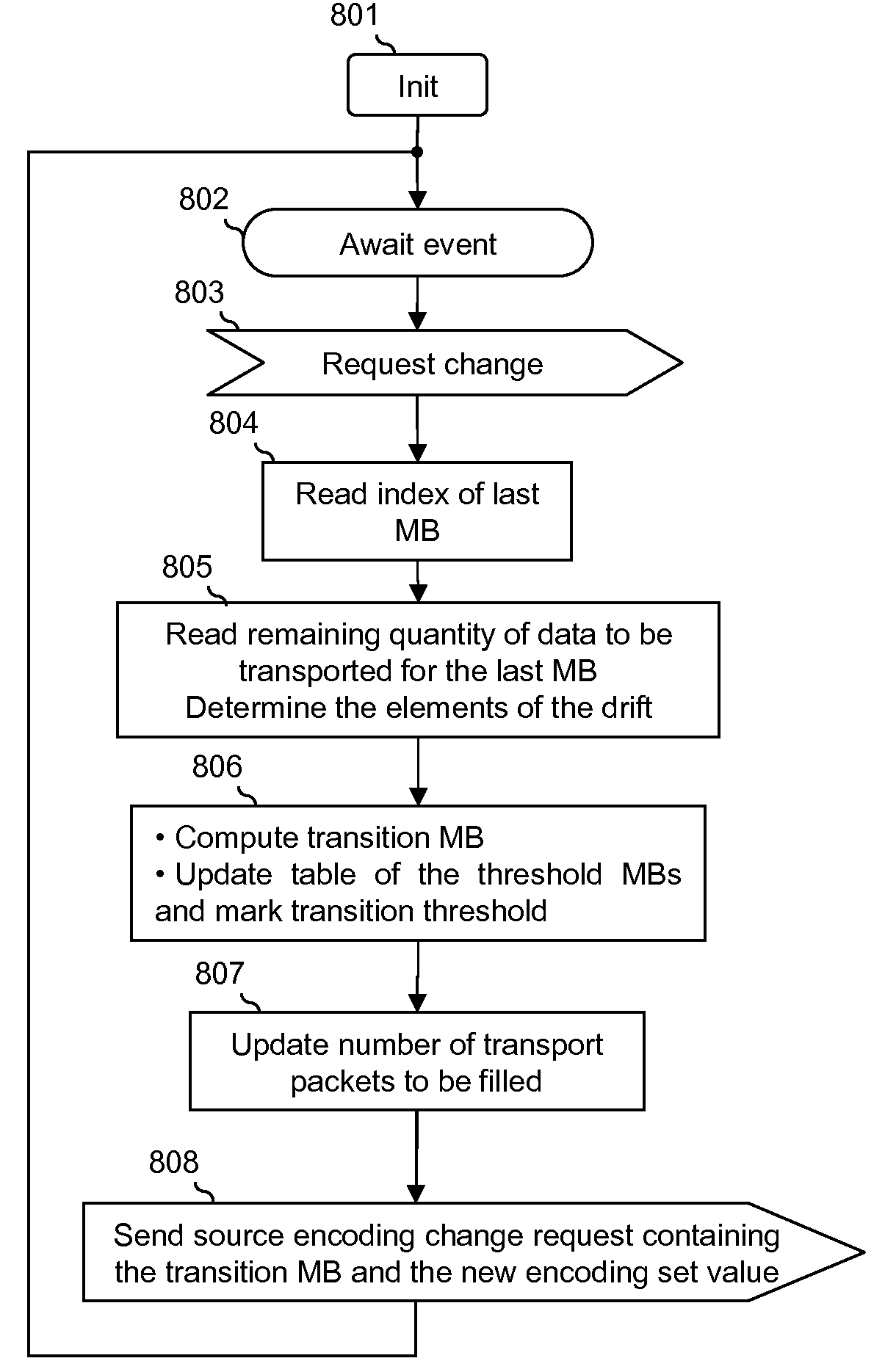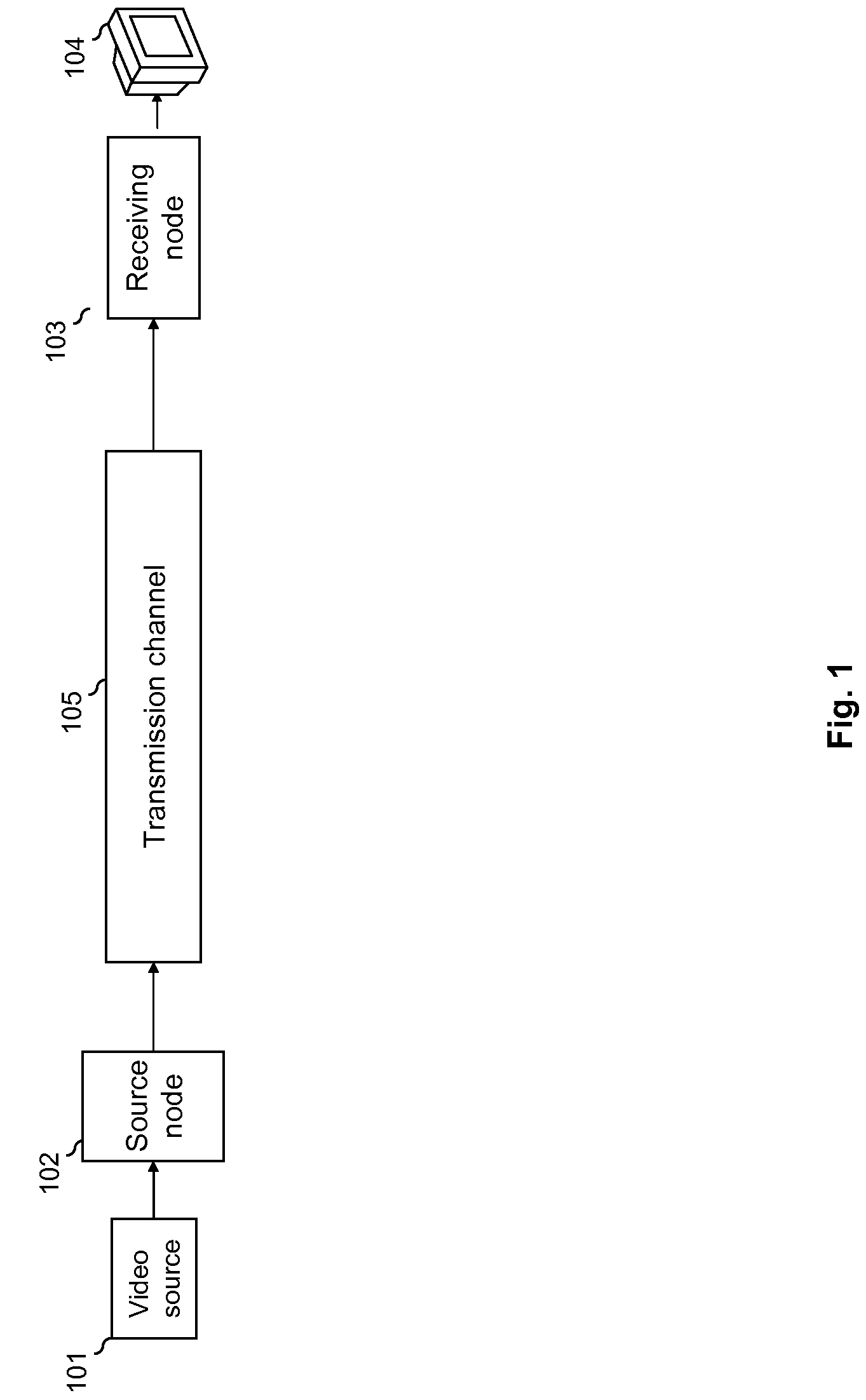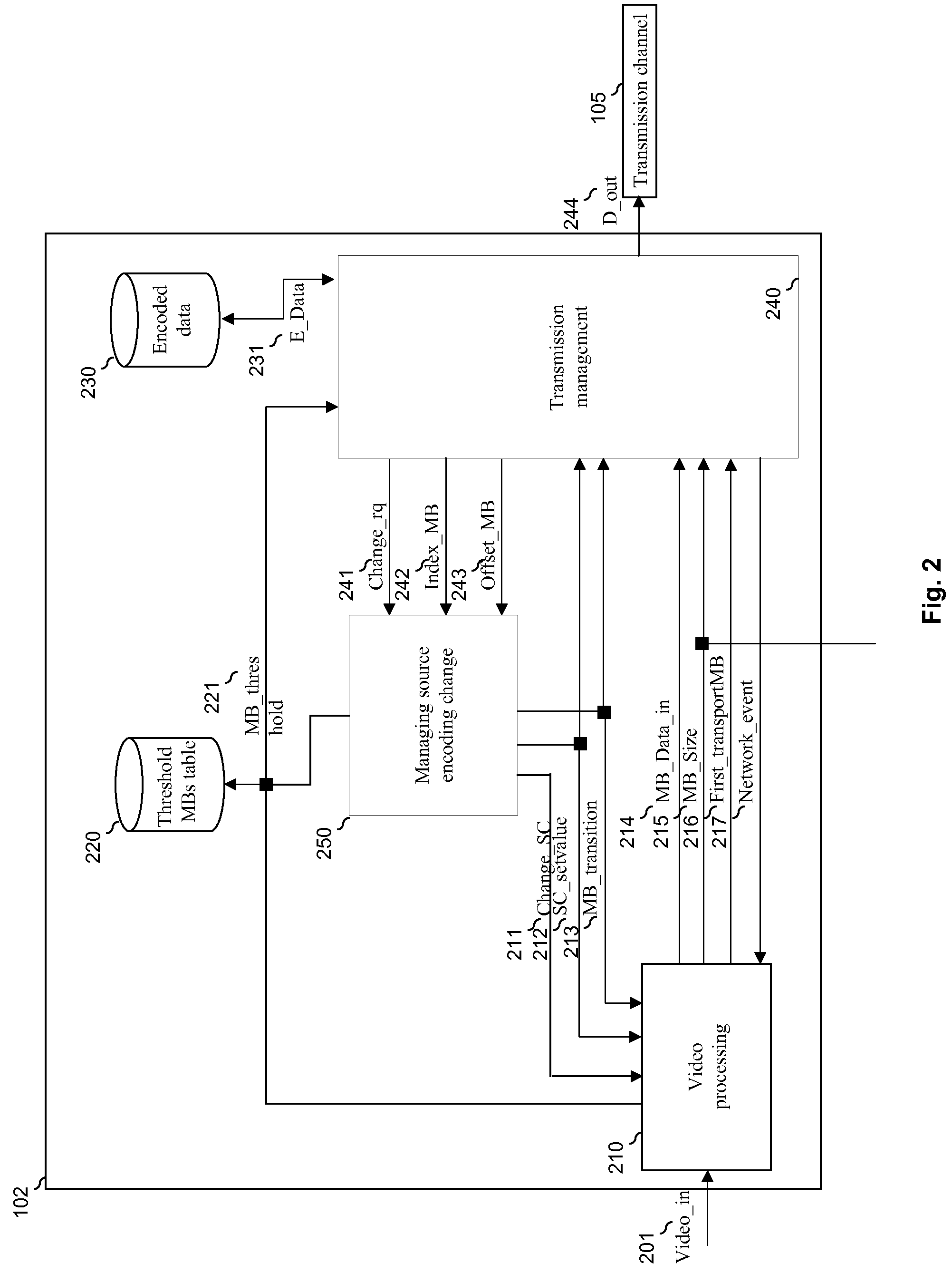Method for managing a data transmission from a sender device, corresponding computer-readable storage medium and sender device
a data transmission and sender device technology, applied in the direction of digital transmission, selective content distribution, electrical apparatus, etc., can solve the problems of affecting the effect of data transmission, affecting the speed of data transmission, and the unpredictable nature of effective switch-over, so as to maximize the use of allocated bandwidth, minimize the duration, and improve the effect of bandwidth consumption
- Summary
- Abstract
- Description
- Claims
- Application Information
AI Technical Summary
Benefits of technology
Problems solved by technology
Method used
Image
Examples
Embodiment Construction
[0065]FIG. 1 describes the architecture of a real-time video distribution system according to one particular embodiment of the invention. This distribution system is used to display the content of a video source on a screen.
[0066]An architecture of this kind is given purely by way of an illustration and the present invention can be implemented in other data transmission systems, whatever the type of data transported, since the invention is not limited to the real-time distribution of video data.
[0067]More particularly, the real-time video distribution system comprises:[0068]a TDM (Time Division Multiplexing) type synchronous transmission channel 105;[0069]a sending node 102, here below also called a sending device, comprising a first end connected to the channel 105 and a second end connected to a video source 101 (for example a DVD player) generating raw audiovisual applications data;[0070]a receiving node 103, here below also called a receiving device, comprising a first end conne...
PUM
 Login to View More
Login to View More Abstract
Description
Claims
Application Information
 Login to View More
Login to View More - R&D
- Intellectual Property
- Life Sciences
- Materials
- Tech Scout
- Unparalleled Data Quality
- Higher Quality Content
- 60% Fewer Hallucinations
Browse by: Latest US Patents, China's latest patents, Technical Efficacy Thesaurus, Application Domain, Technology Topic, Popular Technical Reports.
© 2025 PatSnap. All rights reserved.Legal|Privacy policy|Modern Slavery Act Transparency Statement|Sitemap|About US| Contact US: help@patsnap.com



